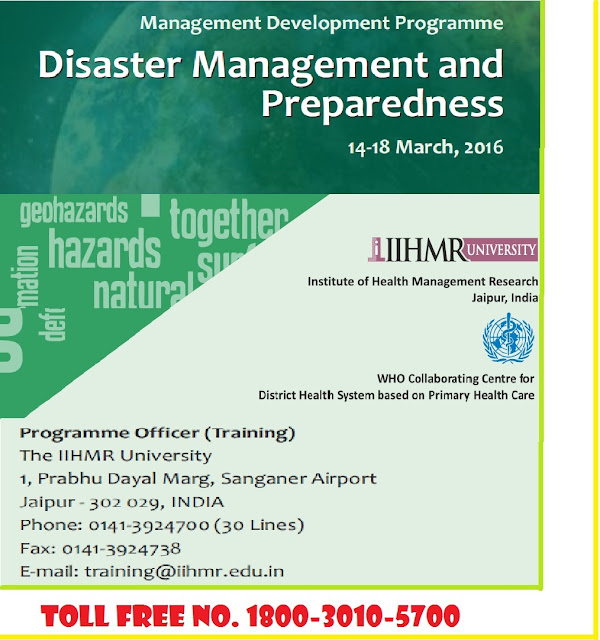BACKGROUND & PROGRAMME OBJECTIVE
Operations management is the design, operation, and
improvement of the processes and systems thatcreate and deliver the
organization's products and services. The goal of operations management is to
moreeffectively and efficiently produce and deliver the organization's products
and services. Manufacturingorganizations have successfully employed the
programs, techniques, and tools of operations improvementfor many years.
Recently, leading healthcare organizations have begun to employ the same tools.
Theobjective of this MDP is to apply operations management philosophies,
techniques, and tools in healthcare for making the healthcare delivery
efficient and effective.
PROGRAMME
CONTENTS
The programme will cover the following Operation Management
(OM) techniques in healthcare
management:
• Introduction to Modern Operations Management tools and
techniques in Healthcare.
• Healthcare Project Management through PERT: The Gantt
chart, Program Evaluation and Review
Technique (PERT) and the Critical Path Method (CPM) in
healthcare project management. Case
Study/Exercise Solutions using QM software/MS Project
Professional (a project management
software program, developed and sold by Microsoft).
• Forecasting techniques and approaches in health care
operations. Case Study Solutions using
software/Microsoft Excel.
• Resource allocation through Linear Programming (LP)
methodology. Applications of LP in
assingments and transportation/distribution problems. Case
Study/Exercise Solutions using
software.
• Facility Location and Layout techniques in health care.
Location Break Even Analsis, Factor Rating
Method in health facility location, Center of gravity method
and GIS in Healthcare location. Layout
planning using SLP, Load Distance Analysis, Computersied
layout analysis.
• Supply Chain and Inventory Management techniques. EOQ,
JIT, ABC/VEN analysis techniques.
• Quality Management tools & techniques in healthcare.
TQM, Six-Sigma, Lean & VSM in
Healthcare, Control Charts, 7 QC tools, Pareto Chart,
Fishbone diagram, Scatter Diagram,
Histogram, Control Charts in healthcare. Introduction to
NABH/JCI Standards. Case Study
Solutions using software, Microsoft Office Visio
(diagramming and vector graphics application of
the Microsoft Office family).
• Queuing & Capacity planning in healthcare services.
Single Server/Multi-Server, Queuing Cost
Analysys, Case Study Solutions using software.
The programme will train the participants in using Software
for Decision Sciences, Microsoft Excel, MS
Project Professional 2010 and Microsoft Visio using cases
and exercises in healthcare management.
WHO
SHOULD ATTEND
The programme is designed for Hospital CEOs, Managing
Directors, Administrative Officers, Medical
Superintendents, Medical directors, Nursing directors, Hospital
Managers, Manager Operations - Quality
managers, Quality Assurance Officers, HMIS
Officers/Consultants, Public Health Consultants, Doctors,
Healthcare consultants, Supply Chain Managers, Hospital
Operations Executives, Distribution and
Logistics Managers with substantial managerial
responsibilities, interests, and motivation to learn and
improve healthcare services.
For more information download brochure - https://goo.gl/uIFwos
See More training programs - https://goo.gl/KlgqzV
See More training programs - https://goo.gl/KlgqzV






